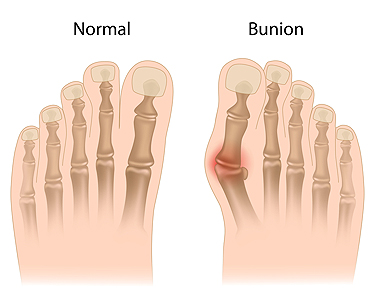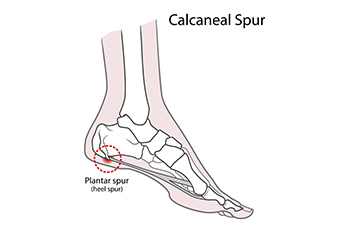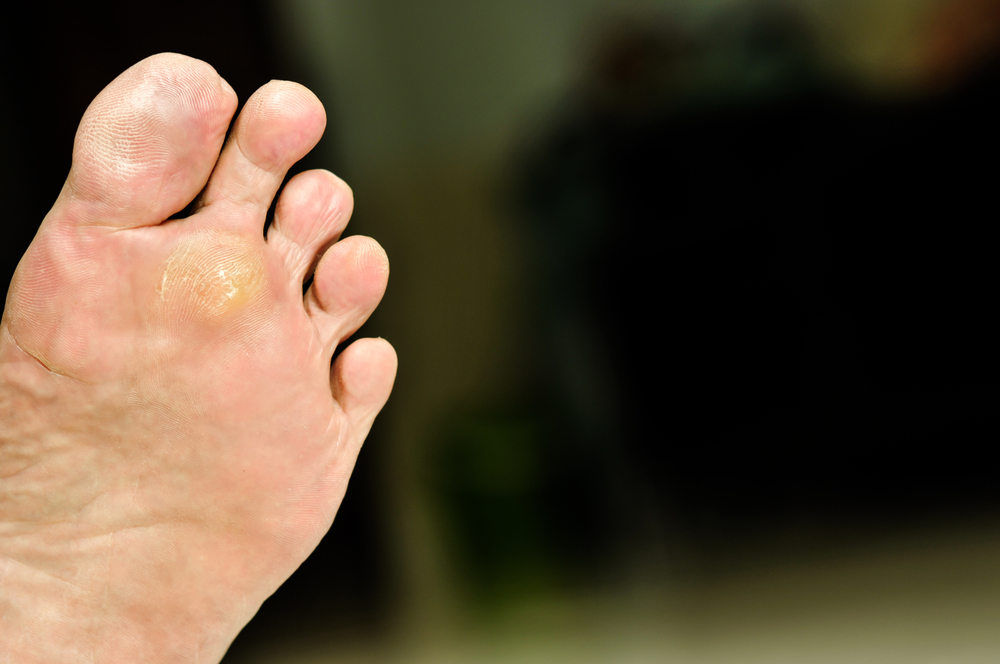Connect With Us
Blog

Bunions are bony bumps that form at the base of the big toe, and women are more likely to develop them due to footwear choices and genetic factors. Narrow or high-heeled shoes with a pointed toe box can place excess pressure on the front of the foot, leading to misalignment over time. Symptoms include pain, swelling, redness, and difficulty wearing certain shoes. Risk factors include a family history of bunions, flat feet, and conditions such as like arthritis. A podiatrist can provide relief through customized footwear advice, orthotics, and, when necessary, surgical correction. If you are experiencing discomfort from bunions, it is suggested that you visit a podiatrist who can offer effective relief and management tips.
If you are suffering from bunions, contact one of our podiatrists of Bangor Podiatry. Our doctors can provide the care you need to keep you pain-free and on your feet.
What Is a Bunion?
A bunion is formed of swollen tissue or an enlargement of boney growth, usually located at the base joint of the toe that connects to the foot. The swelling occurs due to the bones in the big toe shifting inward, which impacts the other toes of the foot. This causes the area around the base of the big toe to become inflamed and painful.
Why Do Bunions Form?
Genetics – Susceptibility to bunions are often hereditary
Stress on the feet – Poorly fitted and uncomfortable footwear that places stress on feet, such as heels, can worsen existing bunions
How Are Bunions Diagnosed?
Doctors often perform two tests – blood tests and x-rays – when trying to diagnose bunions, especially in the early stages of development. Blood tests help determine if the foot pain is being caused by something else, such as arthritis, while x-rays provide a clear picture of your bone structure to your doctor.
How Are Bunions Treated?
- Refrain from wearing heels or similar shoes that cause discomfort
- Select wider shoes that can provide more comfort and reduce pain
- Anti-inflammatory and pain management drugs
- Orthotics or foot inserts
- Surgery
If you have any questions, please feel free to contact our offices located in Bangor, Gilbert, and Bethlehem, PA . We offer the newest diagnostic and treatment technologies for all your foot care needs.

Bony projections that form beneath the heel can sometimes be an incidental finding, but in other cases they contribute to ongoing discomfort. When symptoms arise, the focus is often on calming the irritation in nearby tissues rather than the growth itself. Soft, shock-absorbing shoes or inserts may reduce impact, while gentle stretching routines help ease tension in the arch and calf. More advanced measures, such as specialized therapy or procedures, may be considered if pain continues, despite these adjustments. Surgical removal of a heel spur is generally a final step, reserved for cases that resist other care options. The most effective plan takes into account the cause of pain, activity demands, and overall foot condition. If discomfort near the heel becomes persistent, it is suggested that you see a podiatrist for an assessment and appropriate treatment.
Heel spurs can be incredibly painful and sometimes may make you unable to participate in physical activities. To get medical care for your heel spurs, contact one of our podiatrists from Bangor Podiatry. Our doctors will do everything possible to treat your condition.
Heels Spurs
Heel spurs are formed by calcium deposits on the back of the foot where the heel is. This can also be caused by small fragments of bone breaking off one section of the foot, attaching onto the back of the foot. Heel spurs can also be bone growth on the back of the foot and may grow in the direction of the arch of the foot.
Older individuals usually suffer from heel spurs and pain sometimes intensifies with age. One of the main condition's spurs are related to is plantar fasciitis.
Pain
The pain associated with spurs is often because of weight placed on the feet. When someone is walking, their entire weight is concentrated on the feet. Bone spurs then have the tendency to affect other bones and tissues around the foot. As the pain continues, the feet will become tender and sensitive over time.
Treatments
There are many ways to treat heel spurs. If one is suffering from heel spurs in conjunction with pain, there are several methods for healing. Medication, surgery, and herbal care are some options.
If you have any questions, please feel free to contact our offices located in Bangor, Gilbert, and Bethlehem, PA . We offer the newest diagnostic and treatment technologies for all your foot care needs.

Plantar warts are skin growths that appear on the soles of the feet, caused by a virus that enters through small breaks in the skin. They may look like calluses, but often have small black dots and can feel tender, especially when walking. While some plantar warts resolve on their own, others can become painful, spread, or interfere with daily activities. Podiatrists evaluate the size, location, and persistence of the wart before recommending treatment. Options may include topical medications, cryotherapy, or minor procedures to remove the growth. Removal is often considered when the wart causes ongoing pain, multiplies, or does not improve with basic care. Addressing the issue promptly can also help prevent spreading to other areas. If you have a stubborn or painful spot on the bottom of your foot, it is suggested you consult a podiatrist for an accurate evaluation and effective relief tips.
Plantar warts can be very uncomfortable. If you need your feet checked, contact one of our podiatrists from Bangor Podiatry. Our doctors will assist you with all of your foot and ankle needs.
About Plantar Warts
Plantar warts are the result of HPV, or human papillomavirus, getting into open wounds on the feet. They are mostly found on the heels or balls of the feet.
While plantar warts are generally harmless, those experiencing excessive pain or those suffering from diabetes or a compromised immune system require immediate medical care. Plantar warts are easily diagnosed, usually through scraping off a bit of rough skin or by getting a biopsy.
Symptoms
- Lesions on the bottom of your feet, usually rough and grainy
- Hard or thick callused spots
- Wart seeds, which are small clotted blood vessels that look like little black spots
- Pain, discomfort, or tenderness of your feet when walking or standing
Treatment
- Freezing
- Electric tool removal
- Laser Treatment
- Topical Creams (prescription only)
- Over-the-counter medications
To help prevent developing plantar warts, avoid walking barefoot over abrasive surfaces that can cause cuts or wounds for HPV to get into. Avoiding direct contact with other warts, as well as not picking or rubbing existing warts, can help prevent the further spread of plantar warts. However, if you think you have developed plantar warts, speak to your podiatrist. He or she can diagnose the warts on your feet and recommend the appropriate treatment options.
If you have any questions, please feel free to contact our offices located in Bangor, Gilbert, and Bethlehem, PA . We offer the newest diagnostic and treatment technologies for all your foot care needs.
Blog Archives
- September 2025
- August 2025
- July 2025
- June 2025
- May 2025
- April 2025
- March 2025
- February 2025
- January 2025
- December 2024
- November 2024
- October 2024
- September 2024
- August 2024
- July 2024
- June 2024
- May 2024
- April 2024
- March 2024
- February 2024
- January 2024
- December 2023
- November 2023
- October 2023
- September 2023
- August 2023
- July 2023
- June 2023
- May 2023
- April 2023
- March 2023
- February 2023
- January 2023

